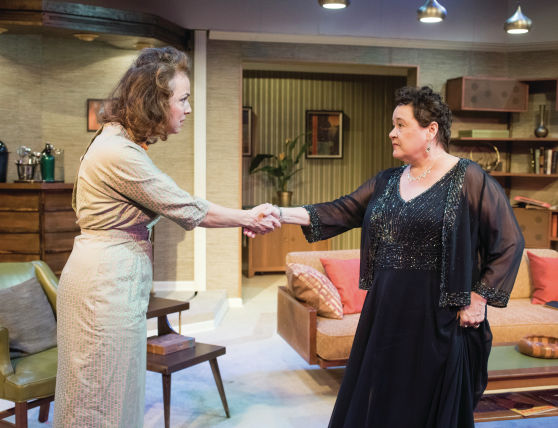
Romantic impulses are usually better indulged in early life, when the odds are greater that the perpetrators will emerge with minimal damage, but at an age where their peers were following their bliss, the Bordons and Ratliffs of Harrison, Texas, were following the money instead. This was 1921, the setting of the late Horton Foote's first of three plays chronicling the progress of these warring clans. This final chapter, The Old Friends, opens in 1965, with the various family members attempting to reverse the choices they made in a last grab for what they missed. It's not pretty. Take Gertrude Ratliff, for example—having finally buried her neglectful husband, she has appointed his brother-in-law Howard her estate manager and de facto consort. Howard's affections, however, have been rekindled by the return of cousin Sybil, whom he jilted in high school, leading her to marry Hugo Bordon, recently deceased en route to the homecoming occasioning the present reunion. This brings us to matriarch Mamie Bordon, currently dwelling uncomfortably with her man-chasing daughter Julia and the latter's ill-tempered husband Albert. Enablers include two indifferent housekeepers and young townie Tom Underwood, dispatched by his mother to seek employment from their wealthy neighbors. Audiences might be forgiven confusion, given this complicated genealogy and absence of backstory—particularly since it encourages us to assume that the characters have always been exactly as we see them now. How are we to know that meek Mamie once ruthlessly bullied Julia into a loveless marriage, thereby inviting her offspring's rancor, or that Gertrude's unlamented spouse, himself, sowed the seeds of his widow's infantile dependency upon the bachelor sibling charged with escort duties. Monsters are rarely born monstrous, but more information would assist us in understanding the motives behind the destructive behavior we witness. None of this diminishes our enjoyment at watching the kind-hearted poor achieve contentment and the selfish rich get their comeuppance, however petty the stakes for both. (Albert, after brandishing a gun, winds up shooting a kitchen wall, while Gertrude's fury finds expression in pillow-punching chair-throwing tantrums—Jacobean tragedy this isn't.) Raven's technical team replicates museum-accurate environments highlighting the contrast between the chic Ratliff household decor and the fifty-year-old furnishings of the Bordon homestead, as well as that of Julia's fashionable Emilio Pucci mini-shift with Sybil's flowered late-1950s cocktail dress. Michael Menendian's direction of an all-star ensemble for this Raven Theatre production makes it all enjoyable, even if the play ends just as we begin to know its personnel well enough to care about their future.
